M32 Gearbox: Chocolate Bearings
This article is dedicated to the M32 gearbox. It’s super common, so if you’ve ever owned a Vauxhall, Opel, Holden, Fiat, Alfa Romeo, Lotus, Lancia or Chevrolet you might have heard about the General Motors’ M32 transmission or maybe even had the displeasure to replace some gearbox bearings.
In this article, you will learn about the symptoms of bearing failure (which is what the M32 is known for), how to prevent it and how much it costs to fix an M32 gearbox that has already developed a problem.
M32 gearbox bearings
The weak point of the M32 gearbox is one of the two bearings that support the shaft with the 1st, 2nd, 5th and 6th gearwheels. This bearing is commonly called the “6th gear bearing” because it is located next to the 6th gear cogwheel, and also because the typical symptom of failure is the gearbox making a whining noise in 6th gear.
It’s difficult to say how long the original 6th gear bearing will last – some cars had issues as early as 30,000 miles and some vehicles make it to 130,000 miles before bearing failure. In my opinion, this is a fairly common problem. I think it’s likely that all M32 transmission will need to have the 6th gear bearing replaced at some point.
Personally, I’ve had two cars with the M32 gearbox, and both had bearings replaced at around 100,000 miles.
This is what a worn-out 6th gear bearing looks like:
Causes of bearing failure
Typically, the 6th gear bearing wears out first. However, there have been cases of other bearings failing as well. There are two things that cause bearing failure in the M32 gearboxes and both factors are connected.
Bearing size
The first and main reason for the problems with the M32 gearbox is the size of the bearings that hold the shafts inside the transmission. As I see it, they are simply too small.
The smaller the bearing surfaces, the higher the contact pressures between the rollers and the bearing surface (the M32 has tapered roller bearings). During normal operation, the rollers ride the oil film without touching the metal underneath. Higher contact pressures mean that the oil film that prevents the metal-to-metal contact is more likely to break.
So, if the contact pressures in the bearings become too high for the oil to handle, metal-to-metal contact will occur, and bearing material will start being worn away. I believe this is what happens in the M32 gearbox.
Highly stressed bearings are also more likely to experience metal fatigue. Metal fatigue in bearings is a type of failure where micro-cracks appear in the bearing components. The cracks can appear on the surface of the metal, or underneath. Both types of cracks lead to bearing material being removed from the bearing (peeling or flaking away).
It’s actually common to see fatigue wear on failed M32 bearings.
All evidence points towards bearings that are undersized for the conditions they operate in. Undersized bearings also stress the transmission oil, which leads us to the second factor that contributes to premature bearings wear in the M32 transmissions – the transmission oil itself.
Transmission oil
The second cause that contributes to bearing failure is the degradation of transmission oil. Old, degraded oil creates a weaker oil film that is more likely to break in high-stress situations. A good example of a high-stress situation is heavy acceleration in 6th gear during a long motorway run when the transmission is already hot.
Like most manual gearboxes, the M32 does not have an oil change interval specified in the service manual. It is assumed that the oil will last the “lifetime” of the vehicle. For many gearboxes, this works out fine.
So what makes many other gearboxes routinely reach 100,000 or 200,000 miles without oil changes and no symptoms of wear?
First of all, other gearboxes don’t have bearings made of chocolate. Second, the transmission oil has an easier life. One of the main factors that influence the useful lifespan of the oil is the operating temperature.
The M32 does tend to run quite hot. It’s possible to see more than 125°C, which is hotter than the engine operating temperature. Such conditions change the oil viscosity over time and break down the additives that improve oil parameters.
Essentially, when the gearbox cooks the oil several times, it loses its lubricating properties, which leads to a weaker oil-film and accelerated wear.
As I already mentioned, the oil film is what prevents metal-to-metal contact between the gears and in the bearings. If the oil is not up to the task, things will start wearing out at an accelerated pace. The oil does have a tough job in the M32 gearbox, because of the highly-stressed bearings.
Basically, the M32 gearbox needs bigger bearings and fresh transmission oil! An oil cooler would be nice too…
Updated M32 gearboxes
The M32 gearbox was first used in 2004 in the Opel / Vauxhall Astra H. It took a while, but eventually General Motors made improvements to the gearbox to make the bearings last longer.
In the middle of 2012, General Motors gave the M32 transmission larger bearings and added oil galleries in the end case for better oil flow. The updated bearings are 62 mm in diameter, while the original ones were 55 mm. They are also much thicker (17.5 mm instead of 13.7 mm).
Pre-2012 gearboxes can be fitted with the larger bearings, provided that the updated end case is used.
After the 2012 update, these gearboxes should last much longer. If you are looking to buy a car with the M32 gearbox, definitely get one that was produced after 2012. Visually check that the car you are going to buy already has the updated end case. Not all cars had them immediately after the update.
The end case houses the problematic 6th gear bearing, and it’s just behind the front wheel on the left side of the car (UK’s passenger side). Here’s how you can distinguish the updated M32 gearbox from the previous model:

Note the position of the extra oil channel to the “6th gear” bearing
With the steering wheel turned all the way to the left, this is what you should see when you look through the gap between the front wheel arch and the front left wheel:
If you can’t see the gearbox this way, you will need to check from under the car. The M32 gearbox in the photo above obviously has the old type end case, but with new bearings and fresh transmission oil inside.
Luckily for me, I did not pay for the bearing replacement. The previous owner of the car did. This is one way to approach a problem like this. If you know what to look out for, you can buy a nice car with the major problems already fixed by someone else. Selfish? Yes, but don’t shoot the messenger. Better read my guide about buying used cars!
Okay, back to the M32 gearbox and its chocolate bearings.
Symptoms of a worn bearing
Below are the typical symptoms of the 6th gear bearing wear in the M32 gearbox:
-
Whining noise in 6th and 5th gear. The noise may increase when you press the accelerator pedal and may decrease when you release it. Other gears may be noisy as well, but in the vast majority of cases, it’s just the last two gears.
-
Gear stick movement in 1st and 5th gear when pressing/releasing the accelerator pedal. These gears share the same shaft, and the gear lever movement is caused by excess play in the worn-out “6th gear” bearing. It’s quite scary when you think about it – the shaft inside the transmission has enough play to move the gear lever.
-
Bearing prison break – in severe cases, the 6th gear bearing may try to escape from the gearbox. If the bearing has worn out so much that it seizes, the outer bearing race can start spinning and grind a hole in the gearbox casing. That’s why it’s important to replace the bearings early enough. If left unattended, the end case may get damaged beyond repair.
If you are planning to buy a vehicle with the M32 transmission, definitely look out for the symptoms above. Check if the gearbox is quiet in all gears, and check if there is any movement of the gearstick when you press and release the accelerator pedal (in 1st and 5th gear).
Here’s what gear stick movement looks like:
And here’s what a worn-out gearbox bearing sounds like (not necessarily the 6th gear bearing):
Remember that the gearbox is near the left wheel, so that’s where the noise will be coming from.
M32 gearbox repair options
If the bearing wear is noticed early enough, the gearbox can be repaired by just fitting new bearings. It’s best to replace all the bearings that hold the input and output shafts (7 bearings in total). You can leave the differential bearings alone.
This is still much cheaper than replacing the entire transmission. If you leave a worn-out 6th gear bearing unattended for too long, it may try to drill a hole in the end case.
Because these gearboxes are used in so many vehicles, you should have no problems finding a garage that’s able to replace the bearings. You are also likely to find reconditioned gearboxes and repair kits online.
Replacing the bearings costs around £600 in an independent gearbox repair shop (all bearings except the differential). If you are looking at upgrading an old style M32 gearbox with the updated end case and new bearings, it would typically cost around £1000.
If you look on eBay, you will find that people sell “uprated” bearings that are supposed to last longer. Sadly, there is no such thing, unless we are talking about the larger 62mm bearings for 2012 and newer cars.
General Motors used a few suppliers (Timken, SNR, FAG, NGBC) and all bearings suffered the same faith. I don’t think that one is significantly better than the others. If anything, the Timken and SNR bearings may be slightly better than the other two.
The key to repairing the M32 transmission is to get the gearbox shimmed correctly when fitting new bearings. It’s important to have the bearings replaced at a reputable garage.
The tapered roller bearings need to be pre-tensioned correctly. This is done by using shims. Incorrect tension is likely to lead to yet another bearing replacement operation. So make sure that the people in the garage that’s going to repair your M32 gearbox know what they are doing.
M32 gearbox maintenance
There are a couple of things that you can do to improve the lifespan of your M32 transmission. The key thing is replacing the transmission oil regularly. No service interval is specified for the M32 (typical for manual boxes). However, I believe that it is essential if you want the M32 and its chocolate bearings to last.
I’ve heard people say that the original General Motors transmission oil is bad (GM 1940182). I don’t think that’s the reason why these gearboxes fail. GM’s oil is synthetic (good), and it was used in many other GM gearboxes, starting from the light-duty F13, up to the F40 that can handle 400 Nm. Other gearboxes that are filled with GM’s oil don’t have bearing issues.
The problem is that after 50,000 miles in the hot M32, the oil loses its properties and doesn’t offer the same protection as it did in the beginning. The same would apply to any other gear oil.
In 2012, along with the bearing upgrade, General Motors changed the oil to GM 1940004. This one is most likely better (why else would they change the oil?), but I don’t believe that the original GM oil is the cause of the problems.
If you’re still not convinced, Fiat and Alfa Romeo cars don’t use General Motors oil. They use Tutella Matryx. The M32 gearboxes in Fiat and Alfa Romeo cars fail all the same.
The bottom line is that you should pick a good synthetic oil and replace it every 30,000 miles. The newer General Motors oil will do fine, however, there are better options available.
Good:
-
GM 1940004 75W-85 (General Motors factory fill since 2012)
-
Tutela Matryx 75W-85 (Fiat & Alfa Romeo factory fill)
Better:
-
Fuchs Sintofluid 75W-80 (recommended by many drivers and Vauxhall tuners, definitely the most popular uprated oil for the M32)
-
Red Line MT-90 75W-90 (slightly thicker than 75W-85 – better for track cars or in hot climates)
Make sure the M32 gearbox is filled to a correct level (slightly overfilled is fine too). Underfilling the M32 gearbox is a recipe for bearing failure.
Another thing that you could do to prolong the life expectancy of the M32 gearbox bearings is to adjust your driving habits to avoid heavy acceleration in 6th and 5th gear to reduce the load on the 6th gear bearing. This is particularly important in diesel cars, which have a lot of torque.
M32 gearbox oil change
Manual gearboxes, including the M32, don’t have oil pumps to distribute the oil around the gears and bearings. They simply rely on the moving parts to splash the oil around (splash lubrication).
The shaft that holds the 1st, 2nd, 5th and 6th gearwheels is actually the one that’s mounted the lowest out of the three shafts. So the splashed oil will naturally flow down to the 6th gear bearing everytime the car is stopped.
If you’ve already browsed through internet forums in search of information about the M32 gearbox, you might have heard that overfilling the transmission makes it last longer because of improved lubrication of the 6th gear bearing.
Many people think that the 6th gear bearing is mounted somewhere in the upper part of the gearbox where the oil doesn’t reach. In reality, it’s mounted on the bottom, which is already the best place for a bearing to be. I think that adding more oil than specified by GM might help, but not for the reasons people mention.
Higher oil volume means that more heat can be absorbed, and I think this is the real reason why adding extra oil could help. Similarly, the oil channels added to the updated end case allow the oil to reach the bearings easier. The easier flow of oil through the bearings improves the heat transfer as well.
The oil capacity of the M32 gearbox is 2.4 litres. Filling it up to 2.8 litres is okay and may actually help. However, before you do anything, please double check what the correct oil quantity in your car should be.
2.4 litres is the common GM recommendation for the majority of cars with the M32 gearbox, however, they have recommended different quantities for some models.
Location of the oil plugs & how to change oil
The oil change procedure is as follows (you will need access to the underside of the car):
-
The oil fill plug is on top of the transmission, usually, right under the battery tray. In some cars, you can access the filler plug without removing the battery tray, for example, in the Fiat Bravo. In others, you will need to remove the battery and the battery tray. The filler plug is the first one that you should remove in case it’s stuck (you don’t want to drain the transmission and not be able to fill it back up).
The oil fill plug is on top of the gearbox, under the battery. -
Remove the drain plug, which is in the differential housing. Drain the oil for 10 minutes and put the drain plug back in. Tighten it to 20 Nm.
The oil drain plug is in the differential housing, under the car. -
It’s not possible to drain all of the old oil and about 200 ml remains in the transmission. Therefore, you should add 2.2 litres of fresh oil or up to 2.6 litres if you prefer to overfill the gearbox slightly.
-
Put the filler plug back in (30 Nm), and reassemble the battery tray. Connect the battery.
-
Please note that the oil level plug remains untouched. If you remove the oil level plug, you won’t be able to fill the gearbox to more than 2.3 litres. Not using the oil level plug is the correct way to replace transmission oil in the M32. In fact, the updated (post-2012) M32 gearboxes don’t even have the oil level plug anymore.
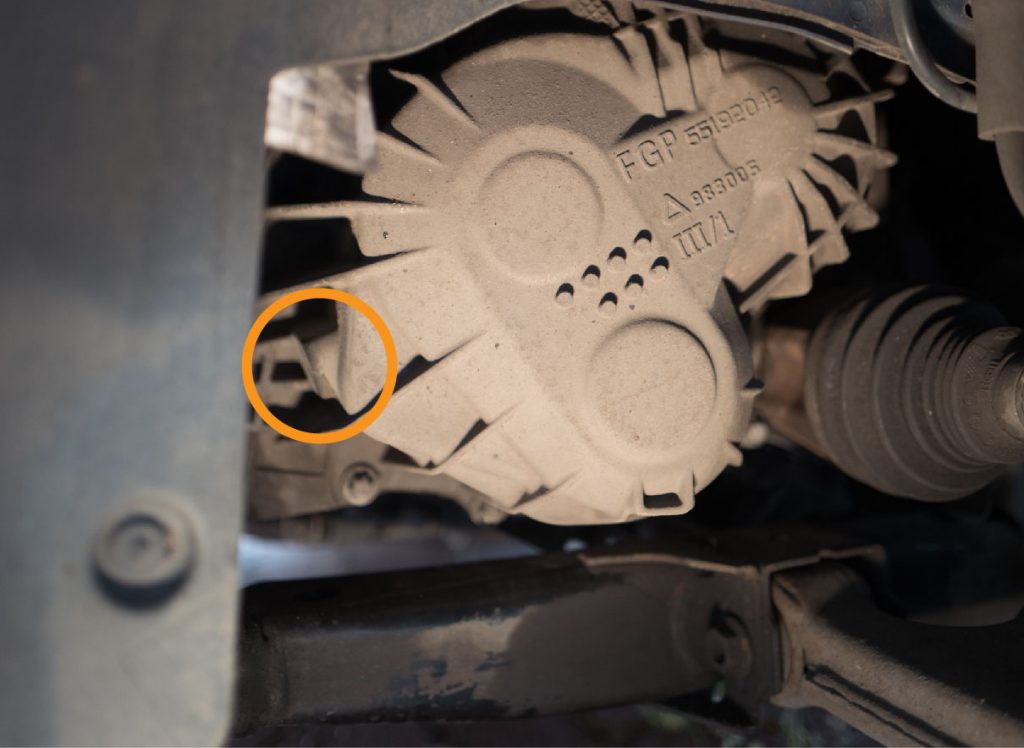
Engine remapping & the M32
The M32 is rated at 320 Nm, however, there are many cars that are tuned well beyond this figure without an immediate impact on the gearbox operation (when not abused). There are diesel cars out there remapped to 400 Nm and these gearboxes can handle that when the bearings are in good condition.
Obviously, remapping the engine is not good for the gearbox bearings, but you may get away with it if you’re careful:
-
Accept that the bearing lifespan may take a hit in remapped diesel cars. This is more likely for pre-2012 cars that have the 55mm bearings.
-
Don’t use full engine torque in 6th gear.
-
Use a top-quality gearbox oil and replace it regularly.
-
Do not remap a car that’s already showing symptoms of bearing wear.
Buying a car with the M32 gearbox
The safest option is to find a car with the updated gearbox (2012 and newer cars).
When doing the pre-purchase inspection, pay attention to any noises and movement of the gear change lever. Drive the car and look out for the symptoms of bad bearings. If everything is fine, you can go ahead and buy the car. Once you get it, replace the transmission oil, and you should be just fine.
As for the pre-2012 cars, pay extra attention to any signs of bearing failure. Again, if everything is okay, you can buy the car, replace the gear oil and you should be fine for quite some time. Bearings don’t go bad overnight. Just remember to replace the transmission fluid regularly.
Buying a car that already had the bearings replaced (at a reputable car garage, with a receipt to prove) is also a great scenario.
Now, if you test-drive a car that’s showing symptoms of bearing wear, you can try to knock £600 off the car price. You can even show the owner this website! Regardless of whether you can negotiate the price down or not, you will need to replace the bearings before the end case gets damaged if you do decide to buy that particular car.
I recommend that you avoid cars that have very noisy bearings and a twitchy gear lever. In these cases, replacing the bearings might not be enough, which makes it a more expensive affair.
M20 gearbox
You may have come here to read about the M20 and not the M32 transmission. Actually, they are almost identical.
The M20 gearbox is a lower torque variant of the M32. The M20 is rated at 200 Nm and is mainly used with small diesel engines like the 1.3 Multijet/CDTi.
It suffers from the same problems as the M32, so everything here applies to the M20 as well. I can’t tell for sure, but the M20 should be somewhat more reliable because it transfers less torque than the M32, while the bearings are the same.
Oh God, it’s everywhere!
Here’s a list of vehicles that were fitted the M32 or the M20 gearbox:
-
Opel / Vauxhall / Holden
-
Astra H (1.6 Turbo, 2.0 Turbo 1.3 CDTi, 1.7 CDTi, 1.9 CDTi)
-
Astra J (1.4 Turbo, 1.6 Turbo, 1.6 SIDI Turbo, 1.6 CDTi, 1.7 CDTi)
-
Astra K
-
Cascada
-
Vectra C
-
Signum
-
Insignia A (1.4 Turbo, 1.6, 1.6 Turbo, 1.6. SIDI Turbo, 1.8, 1.6 CDTi, 2.0 CDTi)
-
Insignia B
-
Zafira B (2.0 Turbo, 2.2 Direct Ecotec, 1.7 CDTi, 1.9 CDTi)
-
Zafira Tourer C
-
Zafira Tourer
-
Meriva A
-
Meriva B (1.4 Turbo, 1.6 CDTi, 1.7 CDTi)
-
Mokka
-
Corsa D (1.6 Turbo, 1.3 CDTi, 1.7 CDTi)
-
Corsa E
-
Adam
-
-
Fiat
-
Grande Punto (1.3 MultiJet, 1.6 MultiJet, 1.9 MultiJet, Abarth 1.4 T-Jet)
-
Punto Evo (1.3 MultiJet Dualogic)
-
Bravo (1.4 T-Jet)
-
Croma
-
-
Alfa Romeo
-
Lancia
-
Delta III
-
-
Lotus
-
Europa
-
-
Chevrolet
-
Cruze
-
Sonic
-
I think I’ve got all the European cars on this list, but I might have missed some Chevy models and other non-European cars. If you know something I don’t, please let me know in the comments!
M32 technical details
To finish this article, here’s some technical data, which may be useful to you.
As you now know, the M32 gearboxes are very common, and these are some of the reasons why they are so popular:
-
It’s a relatively lightweight transmission. It weighs 41.5 kg without the transmission oil, and it is capable of transmitting 320 Nm of torque. For comparison, the General Motors F40 weighs 56.2kg and can handle 400 Nm. That’s almost 15 kg more for additional 80Nm of torque.
-
It’s a three-shaft design, which makes it a compact gearbox. It’s only 33 cm long.
-
The transmission gear change quality is better than in older GM transmissions because of the improved synchronization system. The gear change “feel” is also better when compared to the F40 gearbox. However, this is subjective because the F40 already uses similar gear synchronizers.
-
I believe that standardization is the fourth reason. As an engineer, I can tell you that it’s an ideal situation for a car manufacturer to use only a couple models of transmissions, rather than a dozen various types. General Motors was a huge company that owned multiple brands. Hence, the widespread use of the same components.
There were many variants of the M32 gearbox when it comes to individual gear ratios. However, there were only five variants of the final drive ratios: 3.35, 3.65, 3.84, 3.94 and 4.18.
The individual gear ratios are as follows:
| Type | 1st gear | 2nd gear | 3rd gear | 4th gear | 5th gear | 6th gear | Reverse |
|---|---|---|---|---|---|---|---|
| Type 1 | 3.82 | 2.05 | 1.30 | 0.96 | 0.74 | 0.61 | 3.54 |
| Type 2 | 3.82 | 2.16 | 1.48 | 1.07 | 0.88 | 0.74 | 3.54 |
| Type 3 | 4.27 | 2.16 | 1.30 | 0.96 | 0.74 | 0.61 | 3.82 |
| Type 4 | 4.27 | 2.35 | 1.48 | 1.07 | 0.88 | 0.74 | 3.82 |
| Type 5 | 3.82 | 2.16 | 1.35 | 0.96 | 0.77 | 0.61 | 3.54 |
Then, it’s a pick-and-mix of final drive ratios and gearsets. Together, there are over 15 combinations.
As a final note, cars with the M20 or the M32 gearboxes always have dual-mass flywheels.
I hope you found this article useful.
If you’d like to read more about car transmission maintenance, follow this link.

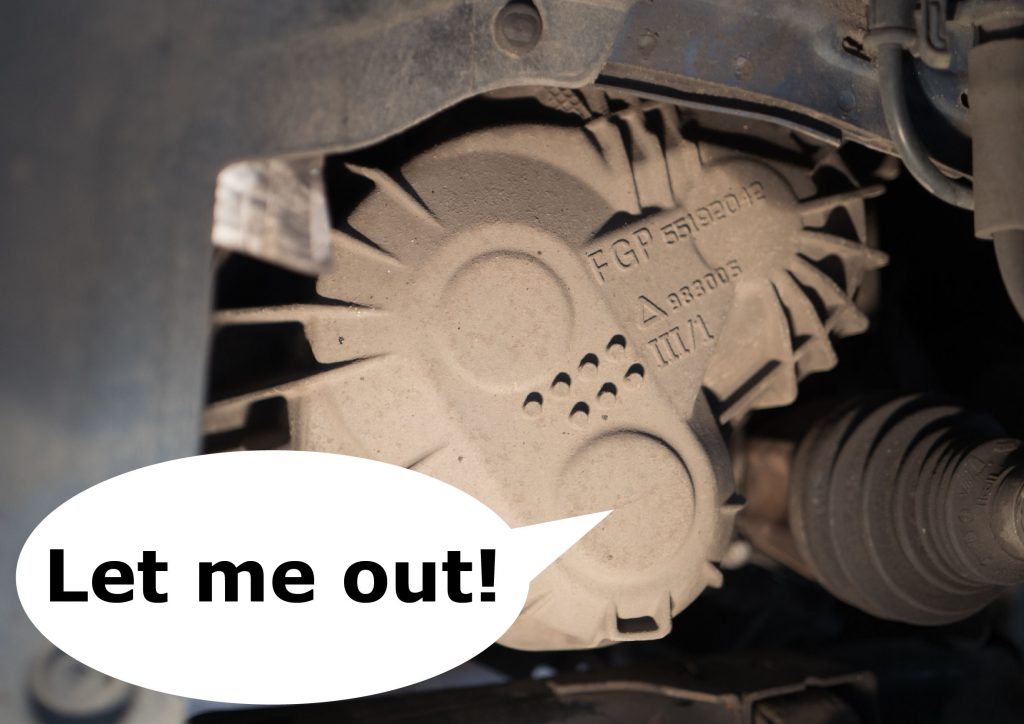
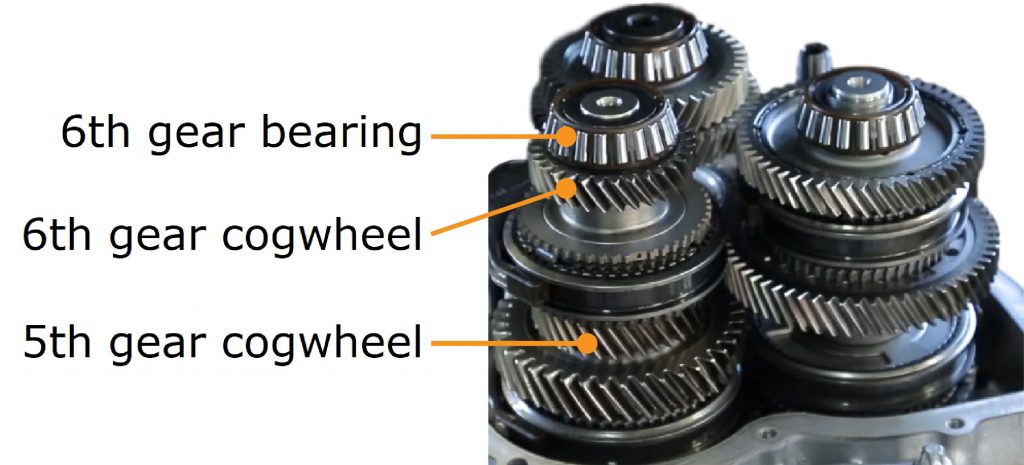
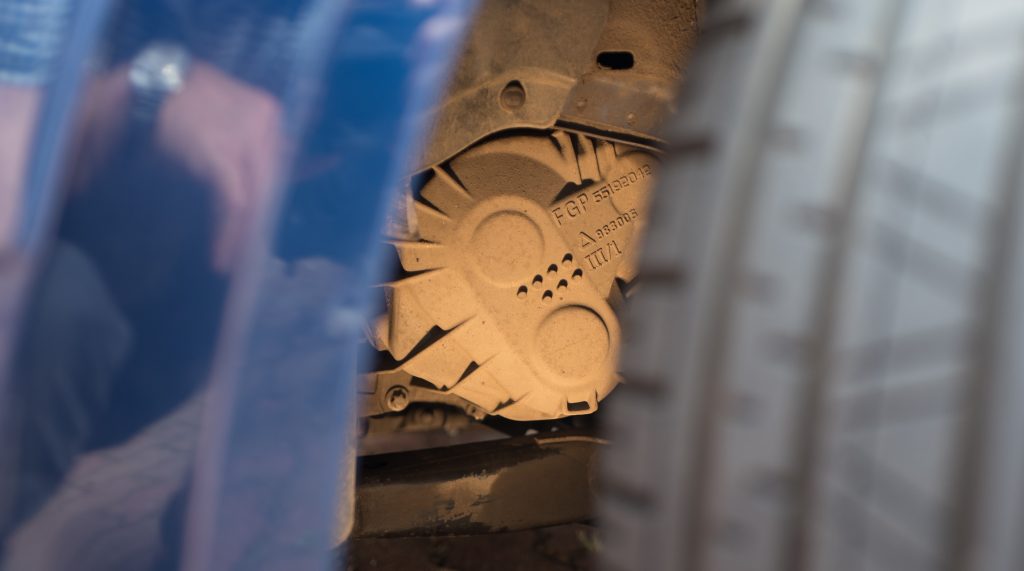
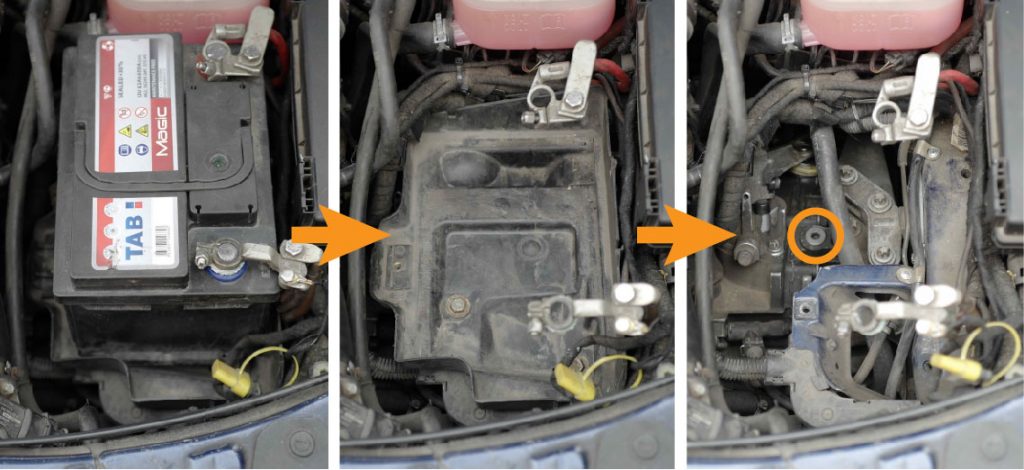
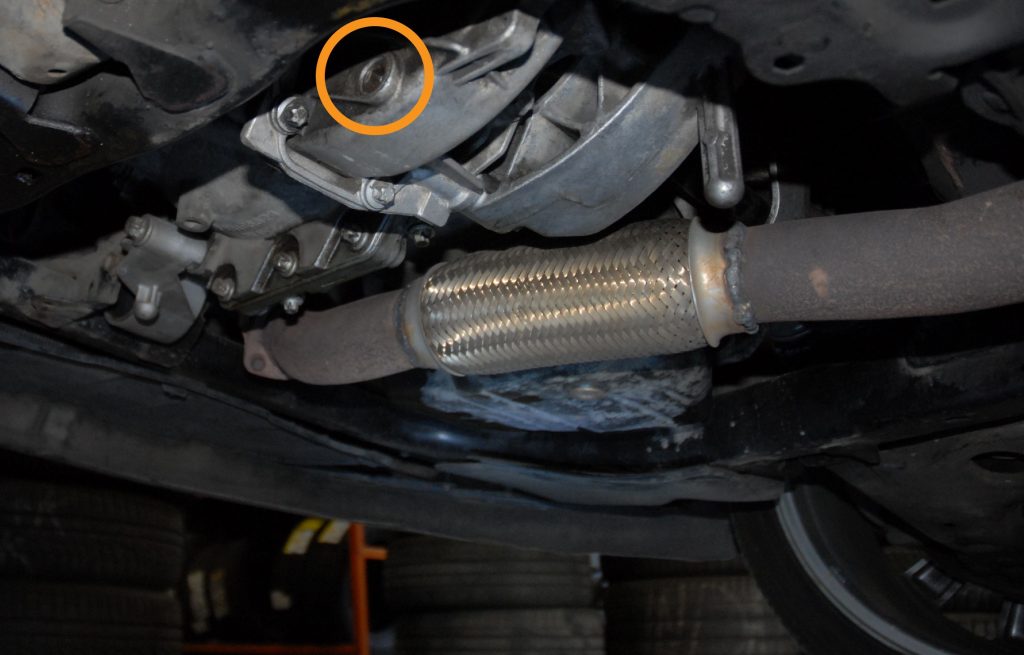
Great article!
Don’t these boxes also have common problem with synchros becoming warn? I think mine (2010 Astra J, 1.4T) is experiencing this issue, rather than the bearing problems, or at least the symptoms are not as above, but rather that it has issues getting into certain gears when cold, and has popped out of second a couple of times. I guess I will eye to source a fully reconditioned box with the updated 2012 bearing and swap it out myself.
I haven’t heard of many problems with the synchros in the M32. I can’t tell what’s wrong with yours.
Have you tried changing the trans. oil? Fuchs Sintofluid 75W-80 is slightly thinner than the original GM oil so it should behave better in low temperatures.
Mine (2.2 Direct, Signum) whines in 3rd and 4th only. Other than that, the box feels smooth. Low oil perhaps, or just different bearings going?
Is there a different gearbox that could be used in place of the M32? I have had my M32 repaired twice in six months via warranty and it is not the smoothest gearbox i have ever come across.
My wife has a 04 plate corsa with 65000 on the clock and the gearbox is smooth.
Your thoughts would be appreciated.
Hi Tony,
The F40 will fit some Vauxhall cars with the M32. However, you would most likely need driveshafts and new clutch to match the F40.
Can Vauxhall call a failed bearing ‘wear and tear’? My gearbox had a catastrophic failure due to a failed bearing, which means the whole gearbox needs replacing. They refused to fix it on Lifetime warranty due to wear and tear. It has done 74,000 miles. many thanks
Just want to thank you for the great article. Not so easy to find so expert advice on anything these days. It helped me a lot.
Thanks once again.
Holden Astra SRI 2.2 direct injection also.
Excuse me, but what happens in the transmission when we have a shift in first gear of one to two millimeters and we have no shift in fifth and sixth gear and we have a noise bearing on idle when the clutch is released after a long drive? Thanks in advance for Your reply
Hi, Does the Astra 1.4 petrol with a five speed box also have the same problems? If not do this have any issues of their own?
Thanks in advance,
John
Hi,
Fantastic read, thank you for taking the time to write all this.
I have a 2006 Signum, 2.2 direct injection. (petrol). I have the ‘whirring’ sound – sounds like a jump jet getting ready for take off – but it’s only on 3rd and 4th, which is confusing the hell out of me… Any ideas?
Cheers again,
Zack
Hi!
My m32 gearbox is 3rd generation , Do you know the changes compared to 2nd gen?
Also opel says to put 1.9Liters. My mechanic puts 1.9 liters motul gear 300ls 75w90 .
Should I put more?
Regards,
Pedro
Hi
The 2012-2017 Holden Barina RS 1.4L turbo (TM platform for Australian and New Zealand) has the M32 gearbox. It uses the gen two gearbox with the larger bearings.
I’ve been using Penrite 75w/80 Transgear GL4 (2.4 litres) in two of these vehicles and they are running very well with no issues. I previously had Redline MT-LV 70W/75W however this proved to be slightly notchy when going from 1st to 2nd and had some backlash when the oil was warm.
And on a slightly different note which may not be useful for this forum so please feel free to ignore the rest.
These little 1.4 turbo engines also have a huge issue with the stock turbo chargers which generally fail with less than 50,000kms on the clock due to waste gate issues and cracks in the cast iron housings (neither are oil related, just bad design).
Thanks lord that our car has the F40..Passing 380 000 Km now. 🙂
I am about to change the oil on my M32 Gen 2 (Astra K). After reading a number of articles and opinions I have opted for 3L of the Fuchs Sintofluid FE 75W which is purely a GL4 oil. Wasn’t sure about the Fuchs Sintofluid 75W 80 as it’s GL4 / GL5 spec which presumably could be less then ideal for the Synchromesh?
Hi, is possible to use the Fuchs gearbox oil in the Astra K 1.6 Turbo SIDI (2017) with the M32 gearbox?
Hi Zack, I have a Grande Punto 1.3mjet, and mine whines too in 3rd and 4th, even after oil change. Other gears are just fine. Has yours failed yet?
Hi, just a question for clarification.
So the new gearboxes are after 2012 or also include 2012 models?
Amazing article thank you!